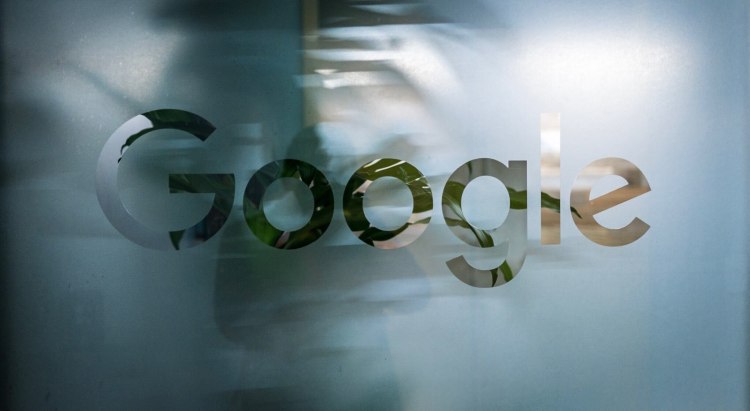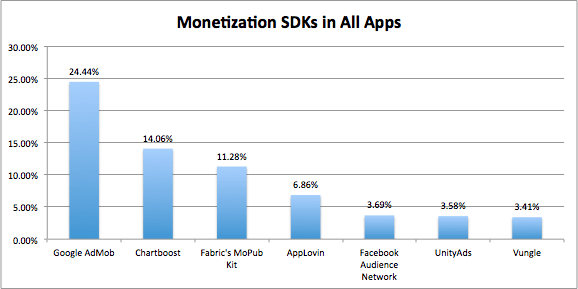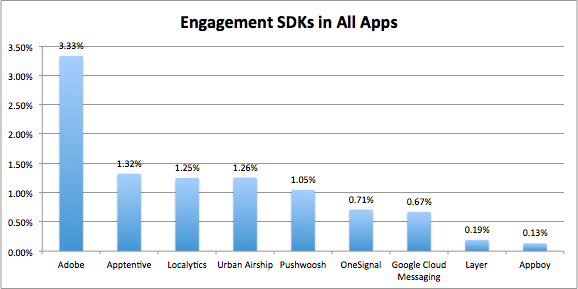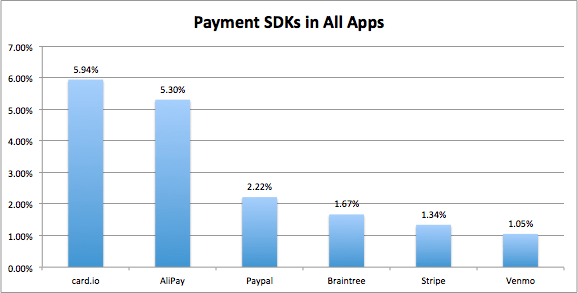Finding shortcuts can be a blessing sometimes, especially if you’re a developer. Instead of having to manually code something that simply replicates functionality you’d find on Twitter, LinkedIn, Nest devices, Apple products, and anything else technological, you can use software development kits (SDKs). But while it seems every company offers one for their service, which ones are the best to use?
According to a report from mobile app intelligence service MightySignal, Google, Adobe, and Twitter have some of the most popular SDKs in the marketplace today. The research looked at six categories: analytics, monetization, app stability, marketing, payments, and attributions. Interestingly, Facebook did not place as the top SDK in any of these spaces.
As Google has extended its reach into many areas, it’s perhaps not surprising to see it take top honors in multiple categories, with Google Analytics being a popular analytics SDK, AdMob for monetization, and Conversion Tracking for ad attribution. Interestingly, among all apps, Google Analytics is most popular (21.18 percent), but when you look at the top 200 apps in the marketplace, Twitter’s Fabric Answers offering surpasses Google (38.5 percent to 28 percent). This seems to suggest that Google still has more recognition among developers overall, but the more popular apps are starting to see value in Twitter.
MightySignal highlights that the top three analytics SDKs are free to use: “This is not surprising for All Apps since there are so many price-conscious independent developers. However, for the Top 200, one might expect paid analytics SDKs with enterprise plans to be more widely adopted because a Top 200 app typically has larger budget.”
In the area of monetization, Google AdMob is most installed from 24.44 percent of surveyed apps. Chartboost, Twitter’s MoPub, AppLovin, and Facebook’s Audience Network are also ranked respectively when looking at all apps. But again, as you look at the top 200 apps, that ranking is changed slightly with MoPub and Facebook Audience Network falling right behind AdMob.
Twitter’s Crashlytics service is used by more developers to assess app stability. In fact, the offering is installed on 12.76 percent of all apps, compared to 2.28 percent for NewRelic. When you look at the top 200 apps, Crashlytics continues to dominate, but NewRelic falls to fifth place, replaced by HockeyApp. “It’s surprising to see that there’s a single dominant leader in a category that is so critical,” MightySignal remarked.
After tracking users, monetizing, and figuring out if the app is stable, the next is to figure out how to engage with users. Adobe takes top honors with 3.33 percent of all app installations, followed by Apptentive, Localytics, and Urban Airship. It looks pretty similar when you examine the top 200 apps.
The space category, payments, sees PayPal dominating with not just one, but four of its SDKs placing in the top five. Mobile payments provider Card.io, which was acquired by PayPal in 2012, is ranked first, with PayPal, Braintree, and Venmo included. The other highly ranked service is Stripe.
It’s easy to see why Google, Adobe, Twitter, and PayPal seem to dominate in their respective categories: As large entities, they have the resources to offer these services to developers. While MightySignal didn’t offer thoughts on why exactly this was the case, it’s possible that developers see these SDKs and know that they’re built to scale for their apps, won’t necessarily be eliminated any time soon, and provide features across multiple categories. And more, companies like Google, Adobe, and Twitter have the data and background that app users would like to see incorporated into the software.






